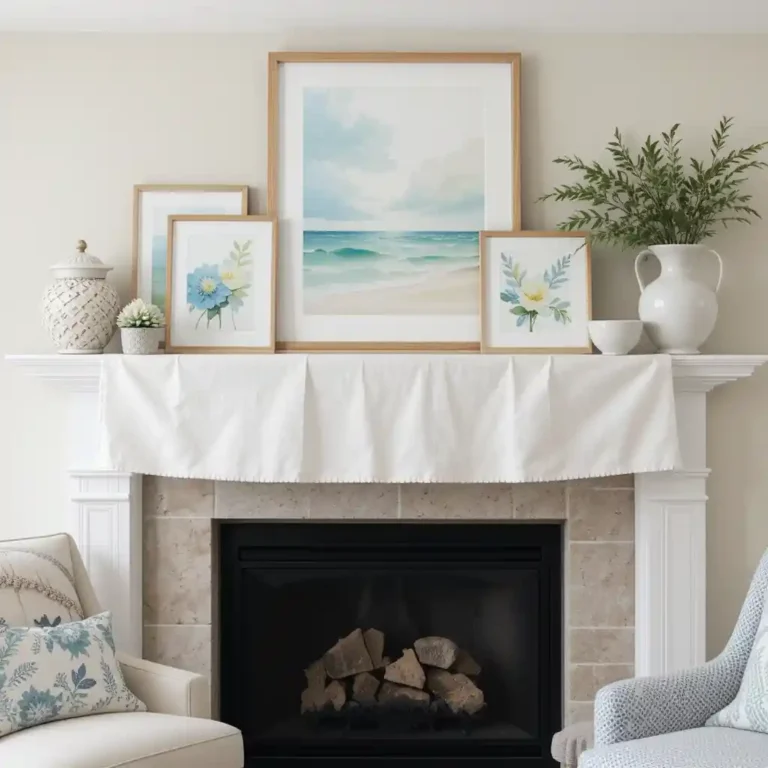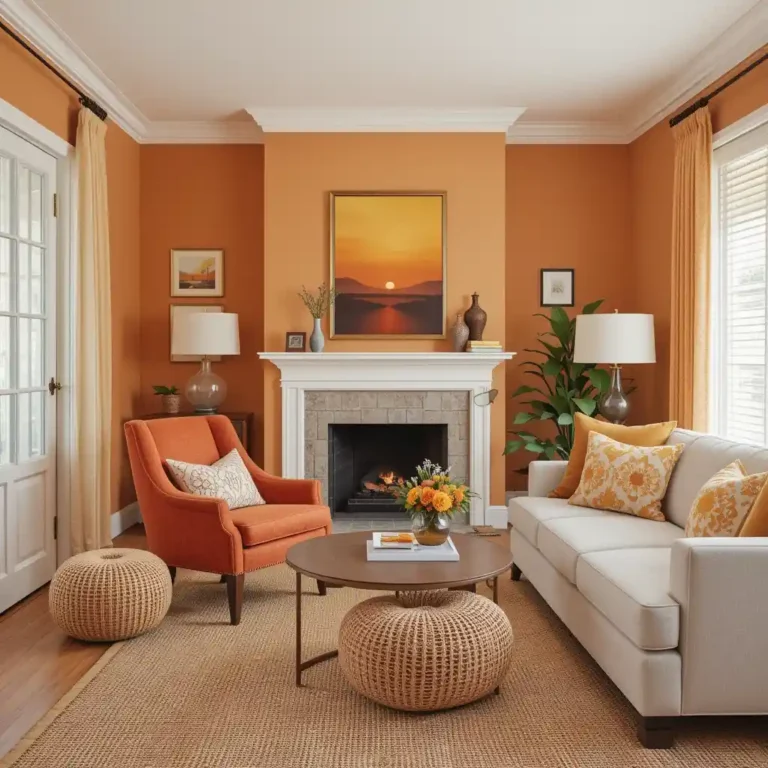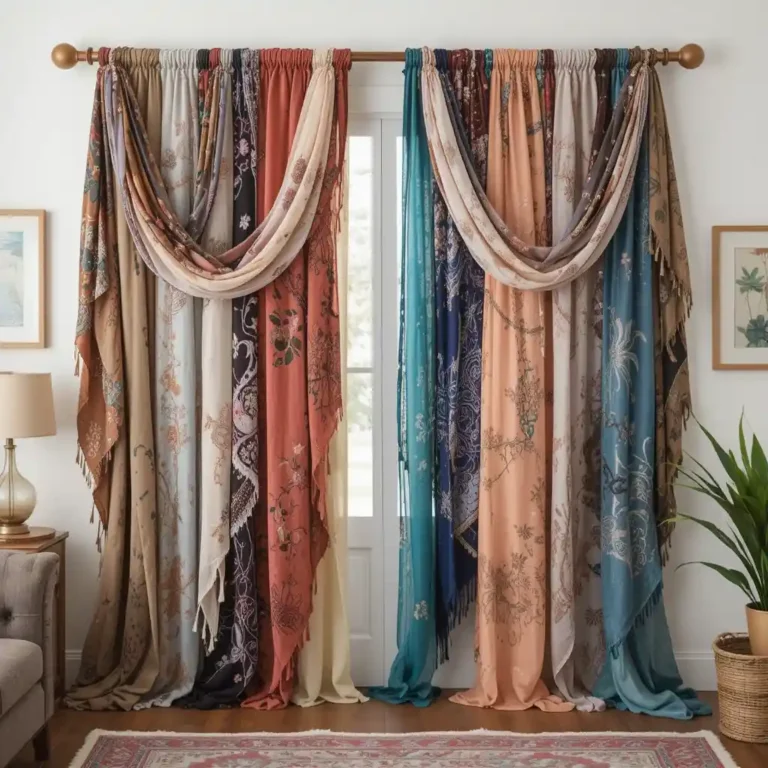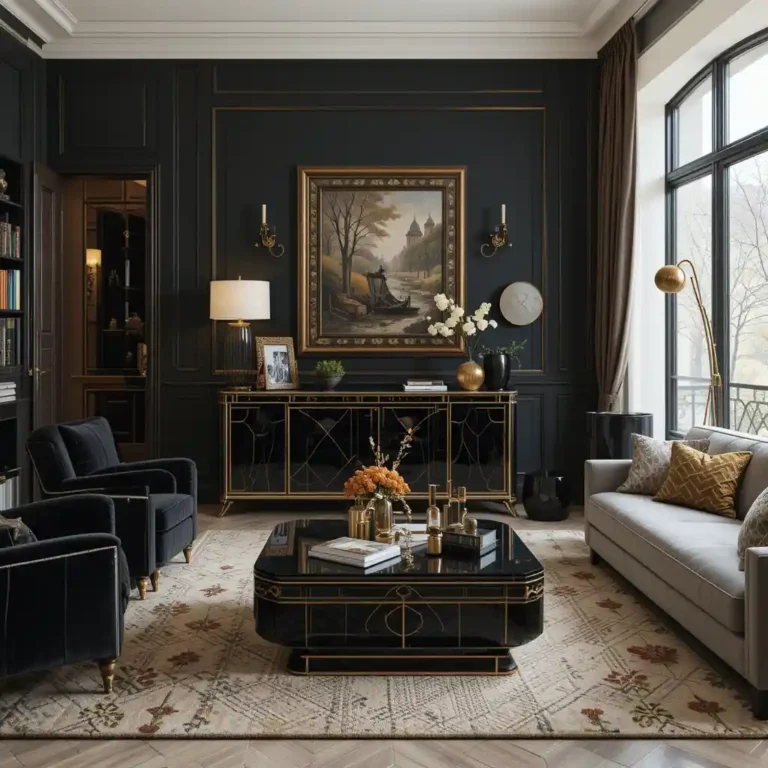38 Stunning Minimalist Living Room Ideas to Maximize Space
A minimalist living room is a sanctuary of simplicity, where less is more and every piece serves a purpose.
This design philosophy embraces clean lines, neutral tones, and clutter-free spaces, creating an atmosphere of tranquility and spaciousness.
Whether you’re aiming for a modern, Scandinavian-inspired look or a cozy, minimalistic aesthetic, the right elements can transform your living room into a harmonious, calming retreat.
Here are 38 unique minimalist living room ideas that will inspire you to create the perfect space, blending functionality with beauty while maintaining an airy, open feel.
1. Neutral Toned Color Palette
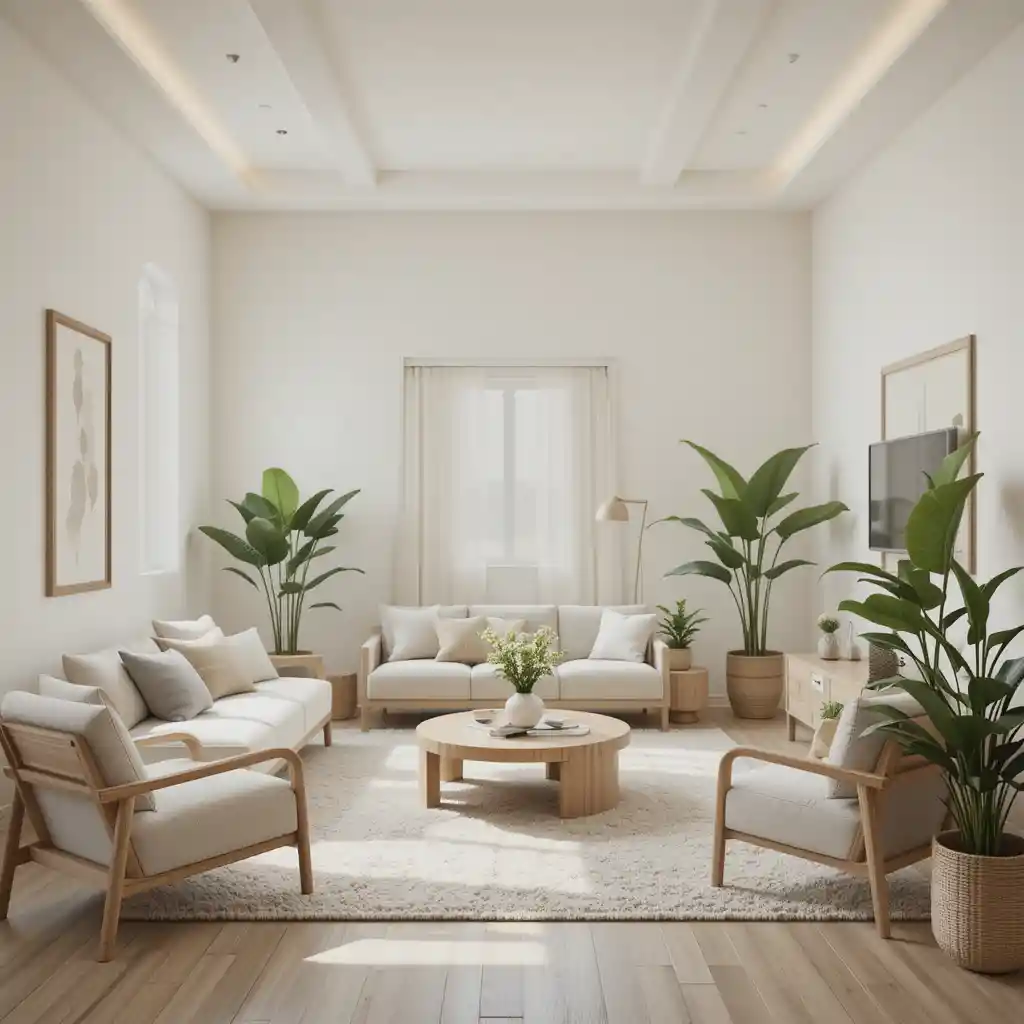
One of the core principles of minimalist design is using a neutral color palette. Opt for shades of white, gray, or beige for walls, furniture, and accessories.
These muted tones make the room feel more expansive and provide a serene backdrop for the space.
Add pops of natural elements like wooden accents or green plants to introduce warmth and life.
2. Sleek Furniture with Clean Lines

Choose furniture that follows the minimalist mantra of simplicity and functionality.
Opt for sofas and chairs with sleek, clean lines and avoid overly ornate or bulky pieces.
Low-profile seating works well in minimalist spaces, providing both comfort and a sense of openness. Look for designs with hidden storage to keep the room clutter-free.
3. Open Shelving for a Clutter-Free Look

Incorporate open shelving in your living room to display only essential, curated items.
Minimalist shelving should be used sparingly to maintain an organized feel.
Choose shelves with simple frames or wall-mounted options that blend seamlessly with the wall to avoid visual clutter.
4. Statement Art Pieces

Instead of crowding the walls with multiple pictures, opt for one or two statement art pieces that draw attention without overwhelming the space.
Choose artwork with clean, bold lines or abstract designs in neutral tones to complement the minimalist aesthetic.
5. Natural Light and Large Windows

Let natural light flood the room by opting for large windows or sliding glass doors. Sheer curtains or blinds in light fabrics help to keep the space open and airy.
The presence of natural light enhances the calm and spacious feel typical of a minimalist living room.
6. Simple, Functional Coffee Tables

Choose a coffee table that serves a functional purpose while adhering to minimalist principles.
Go for a low-profile, geometric table made of wood, glass, or metal with clean lines and minimal decoration.
Avoid overly ornate or bulky tables that could make the space feel crowded.
7. Floating Furniture Arrangement

A floating arrangement, where furniture is placed away from the walls, creates an open and flowing space.
This layout allows for easier movement and encourages a more spacious feel in your minimalist living room.
A well-placed rug can anchor the seating area without overwhelming the room.
8. Functional Lighting Fixtures

Lighting plays a crucial role in minimalist design. Choose functional yet stylish lighting fixtures, such as pendant lights, floor lamps, or wall sconces with clean lines and neutral colors.
Incorporate dimmer switches to adjust the light intensity and set the mood for different occasions.
9. Minimalist Rugs for Comfort and Style

A well-chosen rug can add warmth and texture to a minimalist living room without compromising the clean aesthetic.
Go for neutral tones, subtle patterns, or textured fabrics. A low-pile rug in a muted color adds comfort while maintaining the room’s open, uncluttered feel.
10. Wooden Elements for Warmth

While minimalist design often focuses on neutral tones, introducing wooden elements adds warmth and a natural feel to the space.
Consider wooden coffee tables, side tables, or shelving to create a contrast with the otherwise sleek furnishings.
Natural wood tones help balance the coolness of modern materials like glass or metal.
11. Built-In Storage Solutions

Maximize space with built-in storage solutions that blend seamlessly into the design.
Custom cabinetry can be tailored to your living room’s specific needs, such as hidden compartments for electronics, books, or even extra seating.
This keeps clutter out of sight and maintains the minimalist aesthetic.
12. Monochromatic Color Scheme

Opting for a monochromatic color scheme—using variations of a single color throughout the space—creates a sense of calm and unity in a minimalist living room.
Shades of gray, beige, or even soft pastels can be layered in furniture, accessories, and textiles, maintaining a cohesive, peaceful atmosphere.
13. Minimalist Fireplace Design

A minimalist fireplace can be the focal point of the room without overwhelming the space.
Choose a simple, clean-lined mantel or a modern wall-mounted fireplace.
The minimalist design of the fireplace adds both style and functionality while maintaining a clean, open space.
14. Large Indoor Plants for Natural Beauty

Add a touch of nature with large indoor plants, such as snake plants, fiddle leaf figs, or pothos.
Their sculptural shape and lush greenery bring life to your living room while remaining in line with minimalist principles.
Choose simple planters that complement the room’s aesthetic.
15. Clear Glass Furniture

Incorporate clear glass furniture, such as glass coffee tables or side tables, to keep the space feeling open and light.
The transparency of glass allows the room to maintain a sense of expansiveness while offering a sleek, modern touch.
This choice is ideal for minimalist living rooms that prioritize light and airiness.
16. Geometric Patterns and Shapes

Incorporating geometric patterns and shapes in your furniture and decor adds structure and balance to the minimalist aesthetic.
Choose geometric-patterned rugs, abstract art, or angular furniture to bring a subtle element of visual interest while keeping the space uncluttered.
17. Minimalist Media Console

A media console that is streamlined and functional is an essential element in a minimalist living room.
Opt for a low, narrow console with clean lines and minimal decoration.
This piece serves as both storage for media devices and a surface for decorative items, keeping the space tidy and organized.
18. Simple Wall Shelves

Install simple wall shelves to display only essential items, such as books or decorative pieces.
Choose floating shelves with minimal brackets for a clean, unobtrusive look.
These shelves offer storage without cluttering the room, keeping your minimalist living room feeling spacious and organized.
19. Open Floor Plan for Spaciousness

An open floor plan is essential for a minimalist living room, as it allows the space to feel larger and more fluid.
With fewer walls dividing the room, the flow between different areas is seamless, making the entire space feel interconnected and airy.
Arrange furniture to maximize the openness, creating a balanced, functional layout.
20. Exposed Concrete Walls

For a more industrial minimalist look, incorporate exposed concrete walls into your design.
The raw, unfinished look of concrete adds texture and depth to the room while remaining simple and unpretentious.
This design element complements sleek, modern furniture and adds an edgy yet minimalistic touch.
21. Low Lighting Fixtures for Subtle Ambience

To create a calm and subdued atmosphere, opt for low lighting fixtures such as recessed lighting or hidden LED strips.
These lights are placed in subtle locations, offering soft illumination without drawing attention.
This style keeps the room feeling spacious while enhancing the minimalist aesthetic with gentle, ambient lighting.
22. Monochrome Furniture Choices

Stick to monochrome furniture choices, where the main pieces, such as the sofa, chairs, and coffee tables, are in the same color family.
This eliminates visual distractions and maintains the clean, modern lines that define minimalist style.
Shades like charcoal gray, ivory, or even black are excellent for creating a sleek, unified look.
23. Incorporating Minimalist Textures

Focus on textures that enhance the minimalist aesthetic without overwhelming the space.
Smooth, matte finishes for walls and furniture can create an elegant yet simple look.
Incorporate soft textures such as linen or wool for throws and cushions to add comfort and warmth while keeping the design clean and uncluttered.
24. Simplified Window Treatments

Instead of heavy drapes or ornate window coverings, opt for simplified window treatments like sheer curtains or minimalist blinds.
These allow natural light to flow freely into the space, contributing to the airy, open feel of the room.
The light fabrics also maintain the minimalist design without adding excessive layers.
25. Geometric Lighting Fixtures

Geometric lighting fixtures such as circle pendant lights, triangular lamps, or angular chandeliers can serve as both functional lighting and minimalist decor.
These pieces often become subtle statement items that add sophistication without distracting from the overall clean aesthetic of the space.
26. Hidden Storage to Maximize Space

In a minimalist living room, keeping the space clutter-free is essential.
Utilize hidden storage solutions, such as ottomans with hidden compartments or storage benches, to store items like blankets, remote controls, or books.
This allows the room to maintain a clean, organized look while being highly functional.
27. Tidy Wall Mounted Shelves

Instead of bulky furniture, use wall-mounted shelves to store and display items. These shelves keep the floor space open and allow for more flexibility in the layout.
Choose floating shelves with simple lines for a seamless, minimal design that complements the overall feel of the room.
28. Minimalist Wall Art with a Personal Touch

Add personal touches to the minimalist living room with carefully selected wall art.
Instead of multiple framed photos or busy paintings, opt for one large piece of art, such as a black-and-white photograph or a subtle abstract painting.
This statement piece can add personality to the space without disrupting its minimalist charm.
29. Layering Simple Textiles

Incorporate layering in a minimalist way by using simple, neutral textiles like throw blankets, cushions, or rugs.
Stick to a few muted tones or monochromatic patterns to keep the room feeling serene.
Layering these textures adds depth and comfort without cluttering the space with too many elements.
30. Vintage Pieces for a Minimalist Twist

Integrate vintage furniture or decor items with a minimalist twist. A single mid-century modern armchair or an antique wooden coffee table can serve as a focal point in the room.
These pieces bring character and history to the space while adhering to minimalist principles through clean lines and simplicity.
31. Wide Open Space for Movement

Create a living room that promotes ease of movement by minimizing furniture and maximizing open spaces.
This layout encourages a free-flowing design where every piece of furniture has purpose and placement, and there is enough room to move around without feeling cramped.
32. Mirrored Surfaces to Reflect Light

To enhance the airy feel, use mirrored surfaces strategically in your minimalist living room.
A mirrored coffee table or a large, full-length mirror can help reflect light, making the room feel brighter and more spacious.
These elements also contribute to the sleek, modern design that is central to minimalism.
33. Minimalist Media Wall

Create a minimalist media wall where technology and entertainment are integrated into a simple, functional design.
Choose a wall-mounted TV, a low-profile media console, and hidden cable management systems to keep the space neat and organized.
This setup keeps your living room free of bulky furniture or cluttered electronics.
34. Neutral Upholstery for Timeless Elegance

Select neutral upholstery for sofas and chairs, such as light gray, taupe, or soft ivory.
These colors not only complement the minimalist theme but also offer timeless elegance.
Neutral fabric choices ensure the furniture remains versatile and easily adaptable to various decor styles.
35. Minimalist Decorative Accessories

In a minimalist living room, decorative accessories should be simple and purposeful.
Opt for a few well-chosen pieces, like a sleek vase, a single sculptural object, or a concrete planter.
These accessories can add visual interest without crowding the space or detracting from the clean lines and simplicity.
36. Cohesive Color Coordination

Ensure that every element in your minimalist living room is color-coordinated for a cohesive, streamlined look.
Choose a primary color that defines the space—whether it’s soft white, charcoal, or beige—and build the rest of your design around it. This creates a harmonious environment where nothing feels out of place.
37. Custom Built-In Furniture

For a truly tailored minimalist living room, consider custom built-in furniture.
A built-in bookshelf, seating nook, or even a wall-mounted desk can help save space while keeping everything organized and within reach.
These pieces blend seamlessly with the room, minimizing visual clutter and maximizing function.
38. Simplified Wall Colors

Lastly, keep the wall colors simple and uniform. Stick to soft, neutral tones like white, light gray, or even warm beige to create a calm and serene environment.
A neutral wall color allows other elements in the room to stand out while maintaining a sense of openness and tranquility.
Final Thoughts
A minimalist living room is a celebration of simplicity, functionality, and clean design.
By focusing on neutral tones, sleek furniture, and thoughtful organization, you can create a space that feels both calming and stylish.
Whether through the use of natural light, hidden storage, or simple textures, each design element contributes to a space where every piece has purpose.
With these 38 minimalist living room ideas, you can transform your living area into a serene retreat that prioritizes comfort, aesthetics, and tranquility.
Contents
- 1. Neutral Toned Color Palette
- 2. Sleek Furniture with Clean Lines
- 3. Open Shelving for a Clutter-Free Look
- 4. Statement Art Pieces
- 5. Natural Light and Large Windows
- 6. Simple, Functional Coffee Tables
- 7. Floating Furniture Arrangement
- 8. Functional Lighting Fixtures
- 9. Minimalist Rugs for Comfort and Style
- 10. Wooden Elements for Warmth
- 11. Built-In Storage Solutions
- 12. Monochromatic Color Scheme
- 13. Minimalist Fireplace Design
- 14. Large Indoor Plants for Natural Beauty
- 15. Clear Glass Furniture
- 16. Geometric Patterns and Shapes
- 17. Minimalist Media Console
- 18. Simple Wall Shelves
- 19. Open Floor Plan for Spaciousness
- 20. Exposed Concrete Walls
- 21. Low Lighting Fixtures for Subtle Ambience
- 22. Monochrome Furniture Choices
- 23. Incorporating Minimalist Textures
- 24. Simplified Window Treatments
- 25. Geometric Lighting Fixtures
- 26. Hidden Storage to Maximize Space
- 27. Tidy Wall Mounted Shelves
- 28. Minimalist Wall Art with a Personal Touch
- 29. Layering Simple Textiles
- 30. Vintage Pieces for a Minimalist Twist
- 31. Wide Open Space for Movement
- 32. Mirrored Surfaces to Reflect Light
- 33. Minimalist Media Wall
- 34. Neutral Upholstery for Timeless Elegance
- 35. Minimalist Decorative Accessories
- 36. Cohesive Color Coordination
- 37. Custom Built-In Furniture
- 38. Simplified Wall Colors
- Final Thoughts
